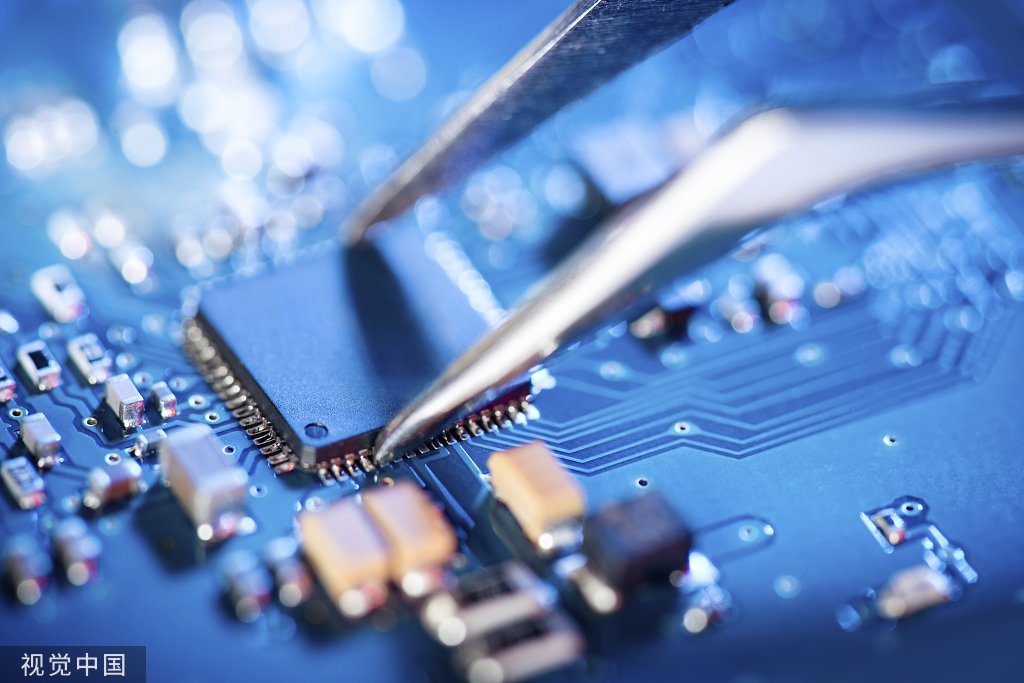- Understanding Your Specific Needs and Usage Scenarios
- Evaluating the Cost-Benefit Ratio: Performance vs. Price
- Compatibility Considerations with Existing Devices
- Researching Brand Reputation and Product Reviews
- Assessing the Longevity and Upgradeability of the Device
- Examining the Warranty and Customer Support Offerings
- Environmental Impact and Energy Efficiency
- Conclusion: Making an Informed Decision for Long-Term Satisfaction
- Adding Value with Quality PCBs
Introduction: The Critical Choice of Selecting New Electronics
When it comes to purchasing new electronic devices, consumers are faced with a myriad of options. Each choice carries its own set of features, benefits, and potential drawbacks. It is imperative for buyers to meticulously evaluate their needs, compare different models, and consider long-term satisfaction. Choosing the right electronics is crucial as it directly impacts one’s daily life and can represent a significant financial investment. With technology advancing rapidly, it is also important to look ahead and select devices that promise longevity and adaptability. Whether for personal use, professional necessity, or entertainment, selecting new electronics requires informed decision-making.
Understanding Your Specific Needs and Usage Scenarios
When selecting a new electronic device, a consumer’s unique requirements and how they plan to use the device are crucial. Factors to consider include:
· The primary purpose: whether the device is for work, entertainment, or general use.
· Performance needs: the level of processing power, memory, and speed required.
· Portability: if the device needs to be lightweight and travel-friendly.
· Compatibility: ensuring the device works with existing peripherals or systems.
· Durability: if the device will be used in harsh environments or requires robust build quality.
· Battery life: for those who are frequently mobile, a longer battery life may be imperative.
· Ergonomics: if ease of use and comfort are important, especially for devices used for extended periods.
Aligning the device’s specs with these considerations ensures satisfaction and efficiency.
Evaluating the Cost-Benefit Ratio: Performance vs. Price
When purchasing a new electronic device, it’s crucial to analyze the cost-benefit ratio. This involves a careful comparison of the device’s performance features against its price tag. Consumers should:
· Identify key performance indicators relevant to their needs such as processing speed, storage capacity, battery life, and display quality.
· Assess if the higher cost of a device correlates to a significant performance upgrade.
· Consider if the performance improvements justify the price difference when compared to similar, less expensive options.
· Remember that the most expensive device is not always the best value. Choose an option that provides the most benefit for the least cost.
Compatibility Considerations with Existing Devices
When purchasing a new electronic device, one must assess compatibility with their existing technology ecosystem. This involves:
· Checking for common ports and connectors to ensure seamless physical integration.
· Confirming operating system compatibility to avoid software conflicts.
· Evaluating network compatibility, especially for devices that require internet connectivity.
· Ensuring that the new device can communicate with older devices via Bluetooth or other wireless technologies.
· Verifying that any proprietary technology used by existing devices is supported.
An incompatible device can lead to additional costs and inconveniences, as it might necessitate upgrades or replacements of other devices.
Researching Brand Reputation and Product Reviews
When considering a purchase, the reputation of a brand is significant. Researching a brand’s history with consumers can indicate the probable longevity and reliability of their devices. Investigating online forums, consumer reports, and social media can provide insights into the user experience and satisfaction levels.
· Look for a pattern of positive or negative feedback across multiple sources.
· Pay close attention to comments about customer service, warranty issues, and product durability.
· Trustworthy review sites often offer detailed analyses and comparisons.
· These can help identify strengths and weaknesses of various electronic devices.
Gauging the consensus among past users offers valuable guidance when investing in new electronics.
Assessing the Longevity and Upgradeability of the Device
When evaluating a new electronic device, prospective buyers should consider its longevity and potential for upgrades. Longevity often correlates with build quality, warranty length, and brand reputation. A longer warranty period may indicate the manufacturer’s confidence in the device’s durability. Upgradeability is vital for extending the life of a product. Factors affecting upgradeability include:
· Hardware Flexibility: Can components like RAM, SSD, or battery be replaced or expanded?
· Software Support: How often does the manufacturer release updates, and for how long is the device supported?
· Compatibility with New Technologies: Will the device work with upcoming standards and accessories?
By carefully assessing these aspects, consumers can ensure they choose a device that will serve their needs for an extended period, offering better value and a reduced need for frequent replacements.
Examining the Warranty and Customer Support Offerings
When selecting a new electronic device, understanding the warranty and customer support facets is crucial. Consumers should:
· Scrutinize the warranty’s length, what it covers, and any limitations or exclusions.
· Verify if there’s an option to extend the standard warranty and at what cost.
· Assess the manufacturer’s reputation for honoring warranties and the ease of making a claim.
· Investigate the availability of customer support: is it accessible 24⁄7, and through what channels (phone, email, live chat)?
· Determine if support is provided by the manufacturer, retailer, or a third party.
· Look into the presence of nearby authorized service centers that can provide repairs if needed.
By meticulously evaluating these aspects, buyers can make an informed decision and avoid potential future complications or unforeseen costs related to their electronic purchase.
Environmental Impact and Energy Efficiency
When selecting a new electronic device, it’s critical to evaluate its environmental footprint. Devices with higher energy efficiency consume less power, reducing the strain on resources and lowering electricity costs over time. Prospective buyers should:
· Check for energy-saving certifications like ENERGY STAR.
· Consider the device’s energy consumption under typical usage scenarios.
· Review the manufacturer’s commitment to reducing environmental impact.
· Investigate device recyclability, the eco-friendliness of materials used, and the potential for responsible disposal.
· Examine battery life and efficiency, as longer-lasting batteries translate to less frequent replacements and reduced waste.
Prioritizing energy efficiency addresses both ecological responsibility and long-term financial savings.
Conclusion: Making an Informed Decision for Long-Term Satisfaction
Making an informed decision when purchasing a new electronic device is crucial. One must weigh personal needs against the available options, considering factors such as cost, features, brand reputation, and future-proofing capabilities. Durability and after-sales support should also factor into the decision-making process. By meticulously evaluating these elements, one can select a device that promises long-term satisfaction, aligning with their lifestyle and demands, thereby ensuring a fruitful investment.
Adding Value with Quality PCBs
When considering the purchase of new electronic devices, it is also beneficial to understand the components and assembly process behind these products. Arisentec is one of the best PCB manufacturers in China, offering comprehensive PCB design services, turnkey PCB assembly, and fast PCB prototyping services. With expertise in printed circuit board assembly (PCBA) and a reputation for delivering high-quality PCB boards for various projects, Arisentec ensures that the electronic devices you invest in are built on reliable and efficient platforms. Their services include microcontroller PCB design and quick turn PCB prototypes, which are essential for creating robust and innovative electronic products. By choosing devices that utilize Arisentec’s advanced PCB technology, consumers can be confident in the durability and performance of their new electronics.
Arisentec provides solutions for a wide range of electronic needs, from simple PCBs to complex turnkey PCB assemblies. Their commitment to quality and innovation makes them a top choice for those looking to ensure the long-term reliability and efficiency of their electronic devices.
Choosing the Right Wires for Breadboard Wiring: A Comprehensive Guide
Breadboards are a staple in electronic circuit building, offering flexibility and ease of use for both beginners and professionals. However, one of the most critical aspects of working with breadboards is selecting the right wires. The wires you choose can impact not only the functionality of your circuit but also its longevity and ease of…
How to Improve Heat Dissipation in PCB Design
Introduction As modern electronic devices become more complex and power-dense, heat dissipation has emerged as a critical factor that directly impacts device performance and reliability. Excessive junction temperatures in electronic systems can shorten the lifespan of components and lead to system failure. Thus, optimizing the PCB (Printed Circuit Board) design to improve heat dissipation is…
Manufacturing Process of Multilayer PCBs
Multilayer PCB manufacturing methods include the plated-through hole (PTH) and high-density interconnect (HDI) methods, both achieved by combining different processes to realize the circuit board structure. Currently, the most widely used method is the PTH method, which has been developed and refined over more than half a century. The PTH method is mature in terms…


